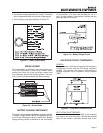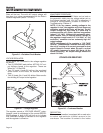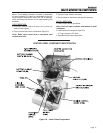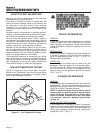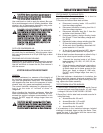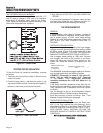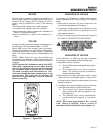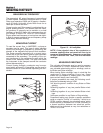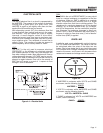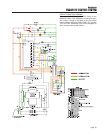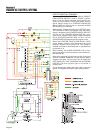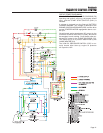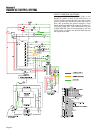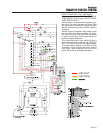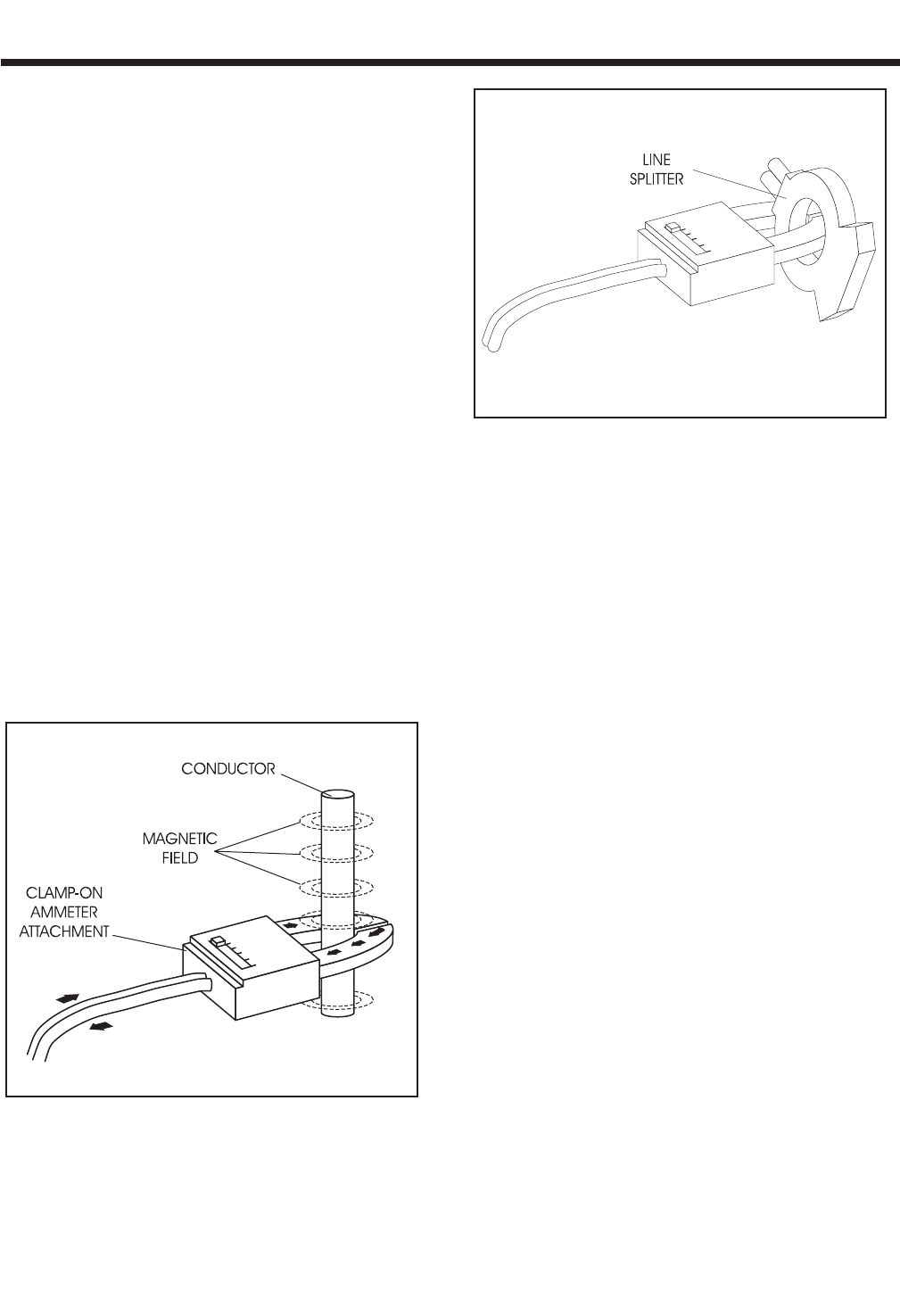
SSeeccttiioonn 44
MMEEAASSUURRIINNGG EELLEECCTTRRIICCIITTYY
MEASURING AC FREQUENCY
The generator's AC output frequency is proportional
to Rotor speed. Generators equipped with a 2-pole
Rotor must operate at 3600 rpm to supply a frequen-
cy of 60 Hertz. Units with 4-pole Rotor must run at
1800 rpm to deliver 60 Hertz.
Correct engine and Rotor speed is maintained by an
engine speed governor. For models rated 60 Hertz,
the governor is generally set to maintain a no-load
frequency of about 62 Hertz with a corresponding out-
put voltage of about 124 volts AC line-to-neutral.
Engine speed and frequency at no-load are set slight-
ly high to prevent excessive rpm and frequency droop
under heavy electrical loading.
MEASURING CURRENT
To read the current flow, in AMPERES, a clamp-on
ammeter may be used. This type of meter indicates
current flow through a conductor by measuring the
strength of the magnetic field around that conductor.
The meter consists essentially of a current trans-
former with a split core and a rectifier type instrument
connected to the secondary. The primary of the cur-
rent transformer is the conductor through which the
current to be measured flows. The split core allows
the Instrument to be clamped around the conductor
without disconnecting it.
Current flowing through a conductor may be mea-
sured safely and easily. A line-splitter can be used to
measure current in a cord without separating the con-
ductors.
Figure 4-2. – Clamp-On Ammeter
Figure 4-3. – A Line-Splitter
NOTE: If the physical size of the conductor or
ammeter capacity does not permit all lines to be
measured simultaneously, measure current flow
in each individual line. Then, add the Individual
readings.
MEASURING RESISTANCE
The volt-ohm-milliammeter may be used to measure
the resistance in a circuit. Resistance values can be
very valuable when testing coils or windings, such as
the Stator and Rotor windings.
When testing Stator windings, keep in mind that the
resistance of these windings is very low. Some
meters are not capable of reading such a low resis-
tance and will simply read “continuity”.
If proper procedures are used, the following condi-
tions can be detected using a VOM:
❏A “short-to-ground” condition in any Stator or Rotor
winding.
❏Shorting together of any two parallel Stator wind-
ings.
❏Shorting together of any two isolated Stator wind-
ings.
❏An open condition in any Stator or Rotor winding.
Component testing may require a specific resistance
value or a test for “infinity” or “continuity.” Infinity is an
OPEN condition between two electrical points, which
would read as no resistance on a VOM. Continuity is
a closed condition between two electrical points,
which would be indicated as very low resistance or
“ZERO” on a VOM.
Page 16




